Born on December 8th, 1792 near Abbottstown in York (now Adams) County, Pennsylvania, John D. Berlin was the eldest of nine children of John Frederick Berlin whose wife was reportedly Juliana Dietzler.
A record in the “Orphan's Court” of Adams County, Pennsylvania dated August 25, 1845 shows that John Sheffer, as heir at law of Frederick Berline in right of his wife Loretta, petitioned the court stating that “Frederick Berline died intestate September 18, 1843 leaving issue eight children, to wit: John, Henry, George, Loretta (wife of petitioner), Eli, Joel, Polly and Frederick. All over the age of twenty-one.”
Census records suggest that John D. Berlin may have resided with his father through 1810 in Adams County, Pennsylvania. I have not located John in the 1820 census where he would have been 28 years old and single.
It is not known when John D. Berlin settled in Columbiana County, Ohio but on February 16th, 1826 he was married to Susannah Huffman in that county. They resided near Washingtonville which lies on the line delineating the counties of Columbiana and Mahoning.
Susannah Huffman (or Hoffman) was born March 9, 1804 in Columbiana County, Ohio. She was the second of eleven children of John and Catherine (Coy) Hoffman. There arises some confusion in several published biographies of Coy family members. It seems that Susannah's aunt, Elizabeth Coy, also married a man by the name of John Berlin! Those biographies state that Elizabeth and John Berlin resided in Nappanee, Indiana. Not true. Elizabeth Coy did marry John Berlin but they lived in Ohio. That John Berlin was born January 8, 1777 and was probably the son of John Nicholas Berlin (brother of John D. Berlin's grandfather) which would make John and John D. first cousins once removed. A record on Find A Grave shows that that John Berlin lived to be 101 years old. He is buried in Stark County, Ohio while his wife Elizabeth is buried in Summit County.
I have never seen a record that indicates what the “D” stands for in John D. Berlin's name but suspect that it was used primarily to distinguish him from that other John Berlin. Columbiana, Mahoning, Portage, Stark and Summit counties are all in the northeast corner of Ohio, which is where both of them lived at various times. His mother's maiden name is reported to be Dietzler, so perhaps he used the “D” in her honor.
On May 26, 1827 Solomon Berlin, the first child of John D. and Susannah, was born. They remained in Columbiana County, near Washingtonville, for the next 19 years and had eight more children: Catherine, 1830; Lydia, 1832; Josiah, 1834; Jacob, 1836; Mary, 1838; Sarah, 1840; Elizabeth, 1843; and Lovina, 1845.
In 1846 John D. Berlin moved with his family to the Rootstown area in Portage County, Ohio where they lived for 18 years. Their youngest son, Joseph Milton was born there in 1848. He was killed in the spring of 1856 in a wagon accident, at the age of seven years.
As with the majority of my ancestors, John D. Berlin was a farmer. As a result, there doesn't seem to be a lot of records on him. I've found him in land records and census records: In 1830 and 1840 in Columbiana County, Ohio as John Barlein and Jno. D. Berlin, respectively. In 1850 in Rootstown, Portage County, Ohio he is enumerated as John Elsworth! He and his family were listed on the lines immediately after Dolly Elsworth. The names and ages of the children match his family completely so there is no doubt that it is the family of John D. Berlin. In 1860 he was enumerated as J. D. Berlin and was still in Rootstown. At that time only the four youngest daughters were still living at home.
Solomon Berlin, the oldest child of John D. and Susan, married Fianna Slabaugh in 1851 and shortly thereafter moved to Locke Township, Elkhart County, Indiana. Catherine Berlin, the next oldest child, was married about 1854 to Frederick Daniel Richmond. They lived in Iowa for several years (where their first two children were born) before settling in Elkhart County about 1858. Jacob Berlin, fifth child of John D. and Susan, was living with his brother Solomon in Elkhart County in 1860.
Susannah's sister, Elizabeth Coy, had married Jacob Stauffer and they had moved with their family to Elkhart County in 1852. John D's sister, Loretta (full name Clarissa Loretta) and her husband, John Shafer, and their daughter and son-in-law, Anna and Isaac Rodibush (or Raudenbush) moved to Elkhart County, Indiana prior to 1860 where they are enumerated in Union township.
With family (and undoubtedly some friends too) already living in Elkhart County, Indiana it was not surprising to learn that John D. and Susan moved there also. Family letters show that John D. and Susan left Portage County, Ohio just a few days after the marriage of their daughter Sarah to George W. Greene (they were married on August 28, 1864). Traveling with John D. and Susan were their daughters Elizabeth (aka Lizzie) and Lovina, and their son Josiah along with his wife and two sons. Three daughters of John D. and Susan remained in Portage County – Sarah, Lydia and Mary Ann. Lydia had married Myron Collins in November 1858 and Mary Ann was still single.
John D. Berlin and Susan were found in the 1870 census in Locke Township, Elkhart County. Residing with them were his brother Frederic (a blind potter, age 60) and his sister Polly (age 58). By then the two youngest daughters had married: Elizabeth to Samuel Coppes in 1867 and Lovina to Eli Yarian in 1866. Lydia, Mary Ann, and Sarah were all still living in Portage County, Ohio.
Lydia's husband, Myron Collins, had died of disease in a hospital in Nashville, Tennessee in April 1865. Nine years later (September 1874) she would marry Henry Woodruff and move to LaCygne, Linn County, Kansas. Henry died in 1898. Shortly thereafter, Lydia went to live in Elkhart County, Indiana.
Toward the end of 1866 Mary Ann Berlin also moved to Indiana. She was living in Elkhart County in 1875 when she married Lewis B. Winder.
Thus it was that Sarah (Berlin) Greene was the only member of the family who remained in Portage County, Ohio. She would live in the Ravenna area the rest of her life, giving birth to seven children, five of whom would live to adulthood. One of her children, Harry B. Greene, would move to Nappanee, Elkhart County, Indiana prior to 1900.
On November 11, 1879, John D. Berlin passed away at the home of his daughter Mary Winder in Locke, Elkhart County, Indiana. His wife Susan died five months later, on April 22, 1880 also at Mary's home. They are both buried in the Primitive Baptist Cemetery in Locke Township, Elkhart County, Indiana.

The family of John D. and Susannah (Hoffman) Berlinfront row: Elizabeth, John D., Susannah, Lydia , Solomonback row: Mary, Sarah, Lovina, Josiah, Catherine
A copy of the above photograph was received in the late 1990s from a descendant of Solomon Berlin. It is not known who now has the original or whether there were any markings on it to indicate where or when it was taken. I'm guessing that it was taken between 1862 and 1868. The son Jacob is not included – he was killed on April 7, 1862 (the second day of fighting during the Battle of Shiloh) – and Josiah died in March 1869.
John D. and Susannah (Hoffman) Berlin are my 3rd great grandparents. Their daughter, Lovina, married Eli Yarian and their daughter Susie Yarian would marry Henry Phend. They were the parents of Rolland Victor Phend who would marry Hazlette Brubaker. And they would become the parents of Virginia (Phend) Wiseman, my mother...
Additional information on The Berlin Family:
- Bible Records
- Introduction to The Letters
- The Cast of Characters
- List of The Letters
 There are many grocery stores close to where we live, but we prefer to go to a particular one, down by the Charles River. This is the shortcut we take to get to the river from the Harvard campus.
There are many grocery stores close to where we live, but we prefer to go to a particular one, down by the Charles River. This is the shortcut we take to get to the river from the Harvard campus.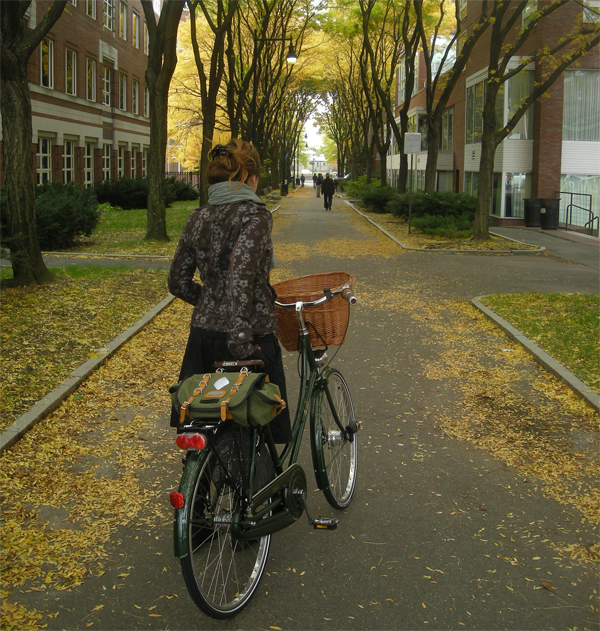 It is such a nice little stretch to cycle through. I wanted to document the feeling of being there before the grimness of November sets in.
It is such a nice little stretch to cycle through. I wanted to document the feeling of being there before the grimness of November sets in. The Co-Habitant advancing into the distance.
The Co-Habitant advancing into the distance.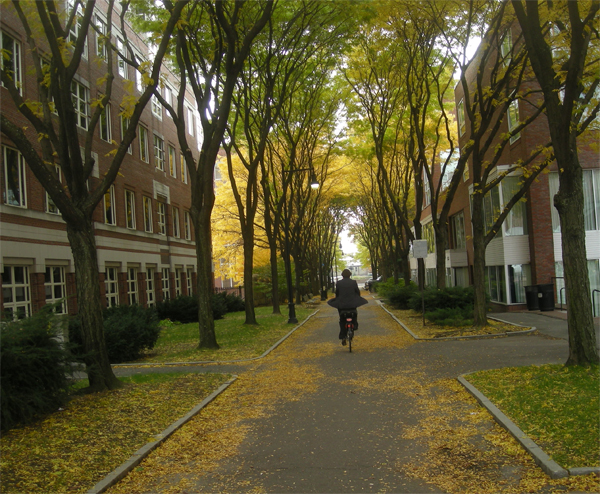 I must say that I love the look of men's coat-tails flapping in the wind when they cycle.
I must say that I love the look of men's coat-tails flapping in the wind when they cycle.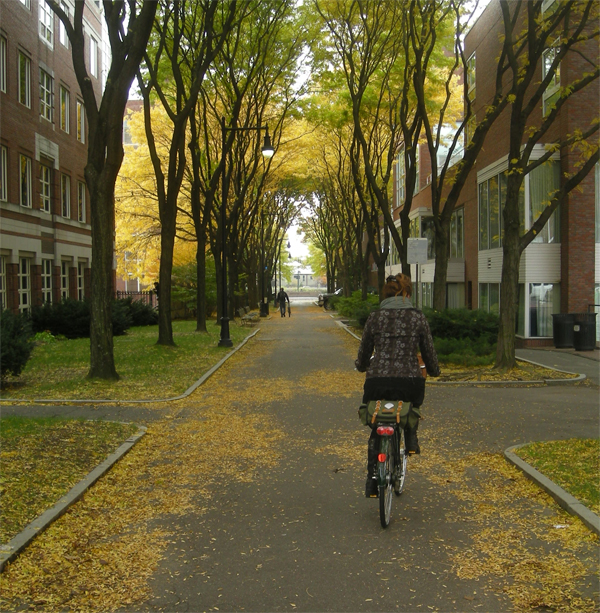 And here I am. Alas, no coat-tails.
And here I am. Alas, no coat-tails.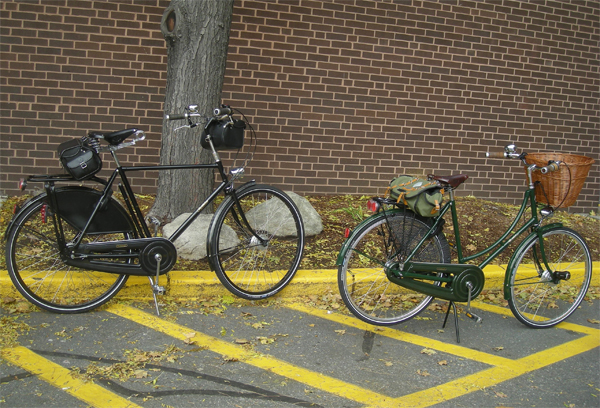 The Pashleys arrive at the grocery store. If you are local, you can probably guess where this is, even with the limited visual cues. I thought the yellow stripes went nicely with the foliage in the previous photos.
The Pashleys arrive at the grocery store. If you are local, you can probably guess where this is, even with the limited visual cues. I thought the yellow stripes went nicely with the foliage in the previous photos.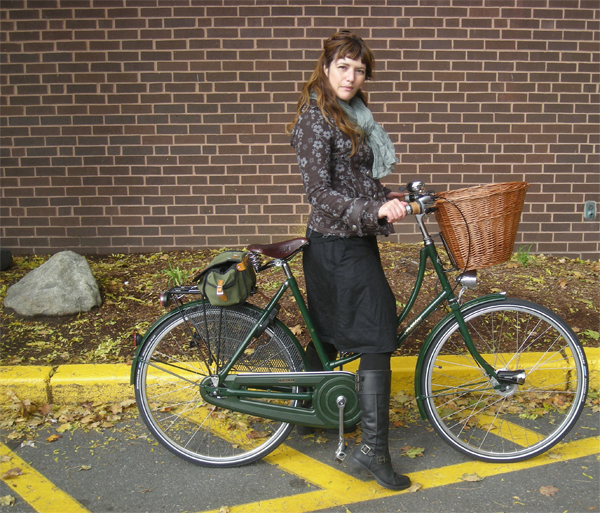 I am happy here, because this was one of my first trips after the latest adjustments to my Pashley (raising and setting back the saddle). My legs are almost completely extended on the pedals now, and I can still touch the ground with one toe while remaining on the saddle. (I know, I know - I need to learn how to ride without being able to reach the ground! )
I am happy here, because this was one of my first trips after the latest adjustments to my Pashley (raising and setting back the saddle). My legs are almost completely extended on the pedals now, and I can still touch the ground with one toe while remaining on the saddle. (I know, I know - I need to learn how to ride without being able to reach the ground! ) The Co-Habitant is happy here as well, because we did not spend too much time inside the grocery store. Most of the time, everything we shop for easily fits into my basket and his saddlebag. Not a lot of hastle there.
The Co-Habitant is happy here as well, because we did not spend too much time inside the grocery store. Most of the time, everything we shop for easily fits into my basket and his saddlebag. Not a lot of hastle there.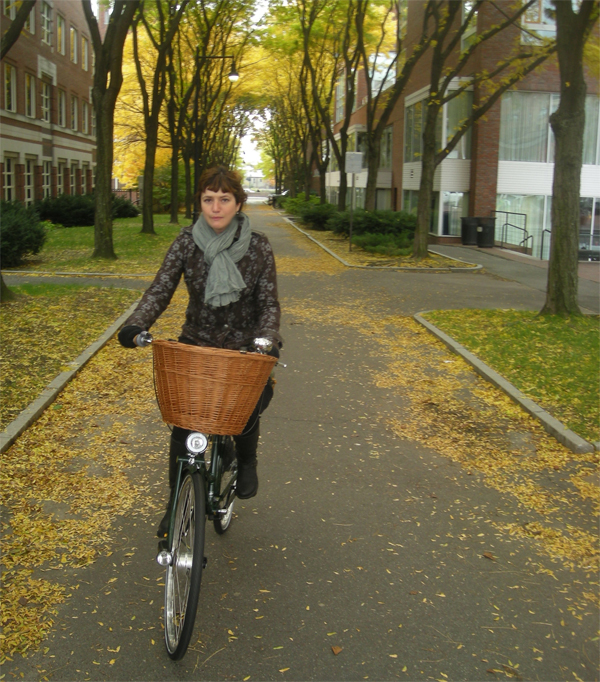 Back home through the tree-lined shortcut. The grocery store trip was actually at the end of a long day of riding all over town. We both had Friday-Sunday off (a rarity due to our unconventional schedules) and enjoyed the weekend together. A good thing, as in a few days I am off to Europe again for the rest of November.
Back home through the tree-lined shortcut. The grocery store trip was actually at the end of a long day of riding all over town. We both had Friday-Sunday off (a rarity due to our unconventional schedules) and enjoyed the weekend together. A good thing, as in a few days I am off to Europe again for the rest of November.







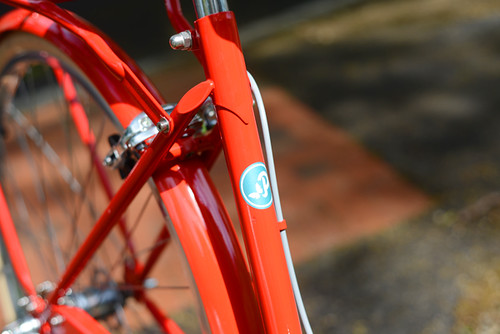
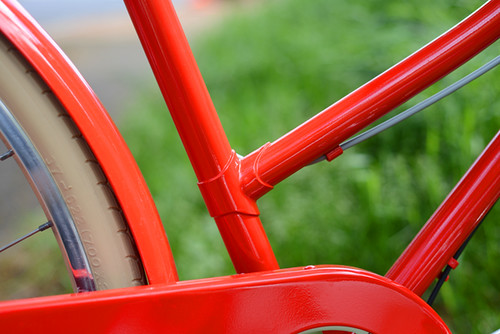
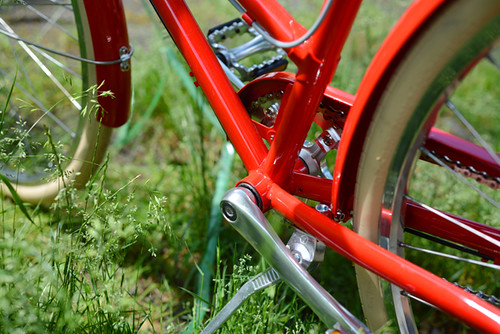
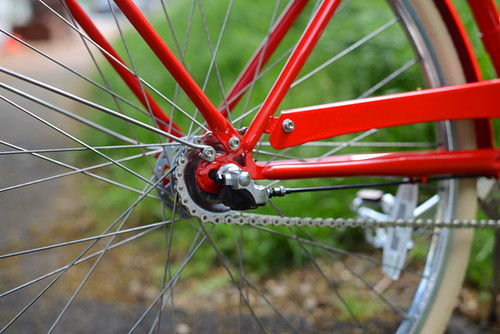
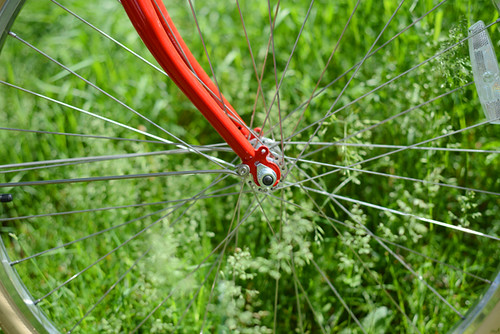
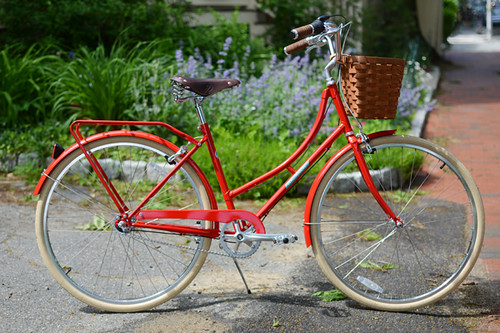


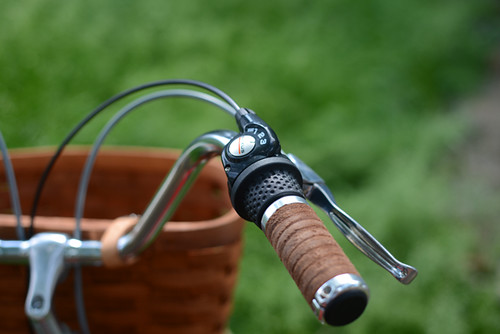
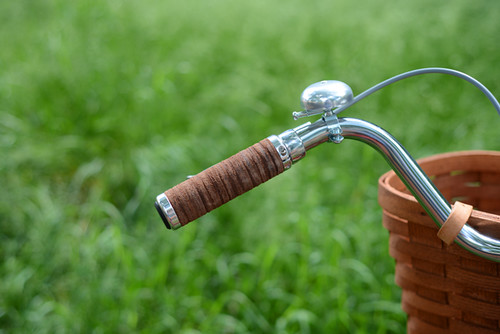
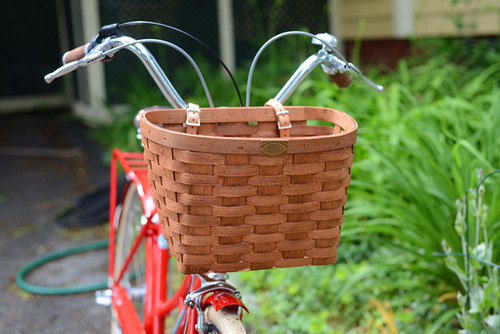
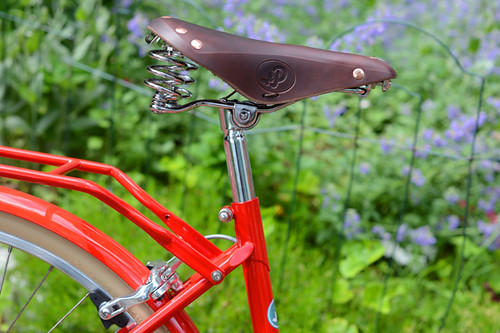
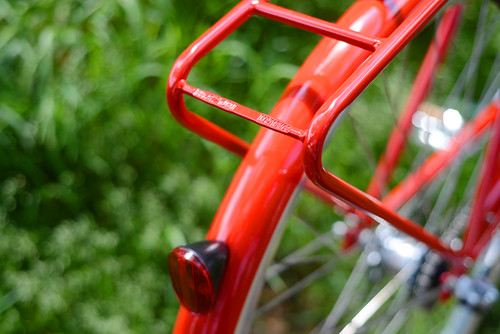
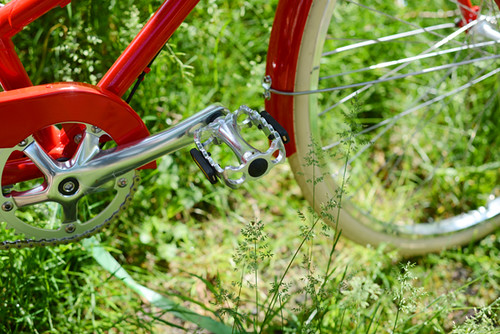

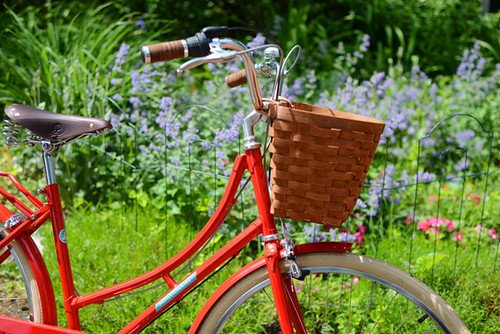

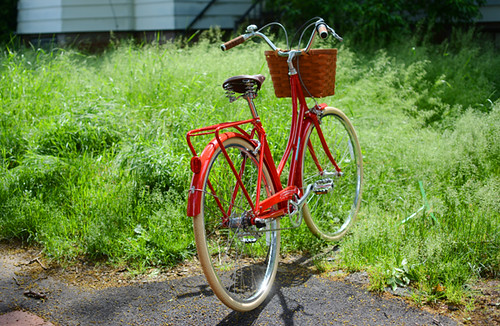















 I was cycling across town with a friend today, who suggested that we take the side streets instead of my usual route along the major roads. We were cycling on one of these quiet streets, when a sedan passed us too closely and hit my friend's bicycle with the side of their car.
I was cycling across town with a friend today, who suggested that we take the side streets instead of my usual route along the major roads. We were cycling on one of these quiet streets, when a sedan passed us too closely and hit my friend's bicycle with the side of their car.